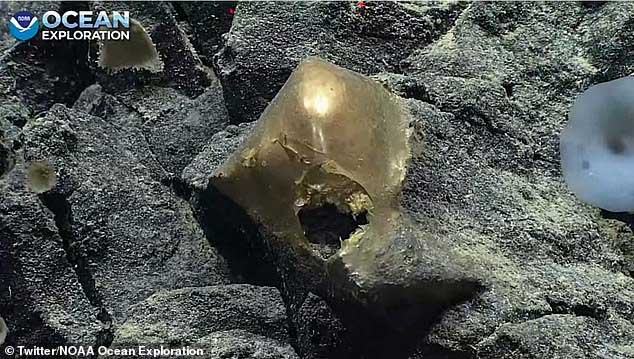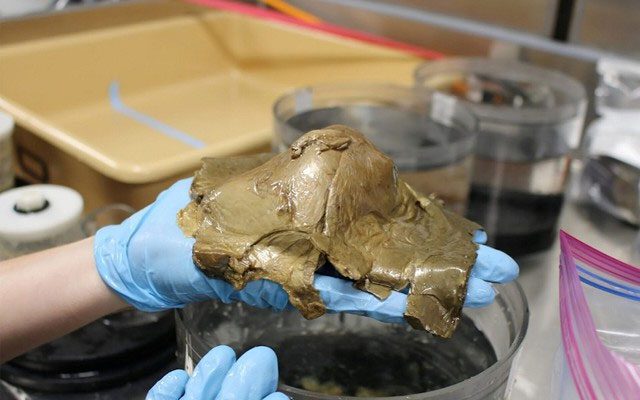According to researchers, in the context of two-thirds of life forms in the deep oceans not yet fully understood by humans, this latest discovery could mark an exciting new exploration.
Scientists are puzzled by a mysterious yellow object recently discovered on the seabed off the coast of Alaska.
The object was found at a depth of 3.2 kilometers during an expedition that took place from August 23 to September 16, led by the National Oceanic and Atmospheric Administration (NOAA). The entire mission was streamed live online.
According to NOAA, the shiny object is very delicate to the touch, resembling human skin tissue. While experts are uncertain about what exactly this object is, they suspect it could be an eggshell or a remnant of a sponge.


The mysterious object is yellow, with a soft, thin outer layer like tissue.
Rather than leaving it in place, NOAA’s submersible deployed a remote-controlled robotic arm to gently touch the object and detach it from the rock.
It was then brought to the surface, where laboratory DNA testing is expected to reveal more about its nature. Experts have yet to determine the cause of the small hole at the front of the “yellow egg”, although it may result from an interaction with another marine creature.
“Something has tried to penetrate… or tried to escape,” a researcher said during the live broadcast about the small hole at the top of the object.
“When our understanding cannot identify what it is, then it is indeed something strange. What kind of animal could create such an eggshell?” another team member added.
The object is believed to be the egg of a mysterious creature currently under examination in the laboratory.
In the context of two-thirds of life forms in the deep oceans still not fully understood by science, this latest discovery could signify an exciting new find. Kerry Howell, a professor of deep-sea ecology at Plymouth University (UK), agreed that the object is “very strange.”
“In 20 years of deep-sea exploration, I have never seen anything like it. There are so many undiscovered species in the deep sea, so this object could easily be related to a new species,” she said.
Professor Howell also noted that the hole on the object could be where a creature inhales and exhales if it is a piece of sponge, or where the creature hatches if it is the shell of an egg.
Murray Roberts, a professor of marine biology at the University of Edinburgh, also concurs with NOAA scientists that this could be an egg. Some species, including vulnerable deep-sea fish like sharks and rays, often lay eggs on seamounts or in cold-water coral habitats. This creature may have broken its egg shell and swum away.
It is known that the photo of the egg, once posted on Twitter, has attracted a lot of speculation from users online.




















































